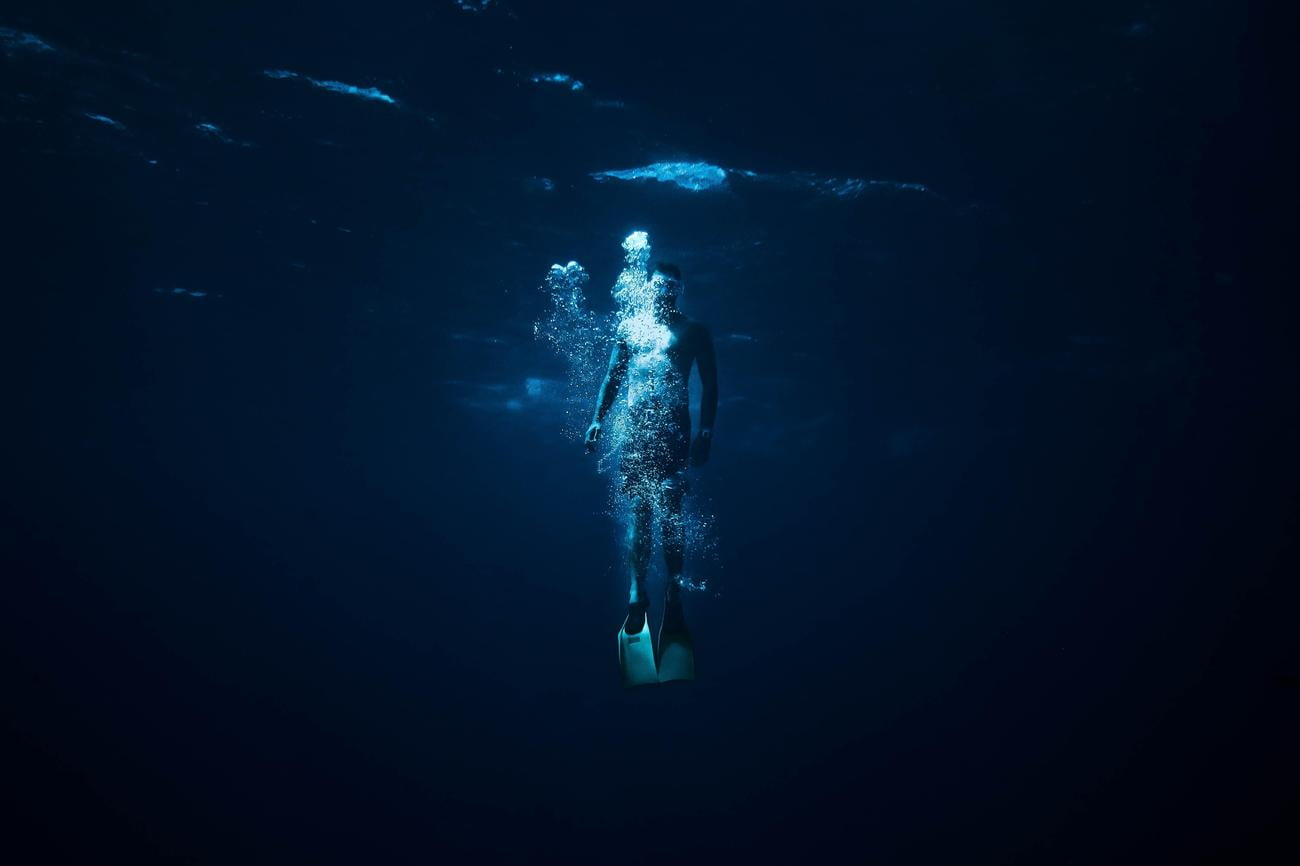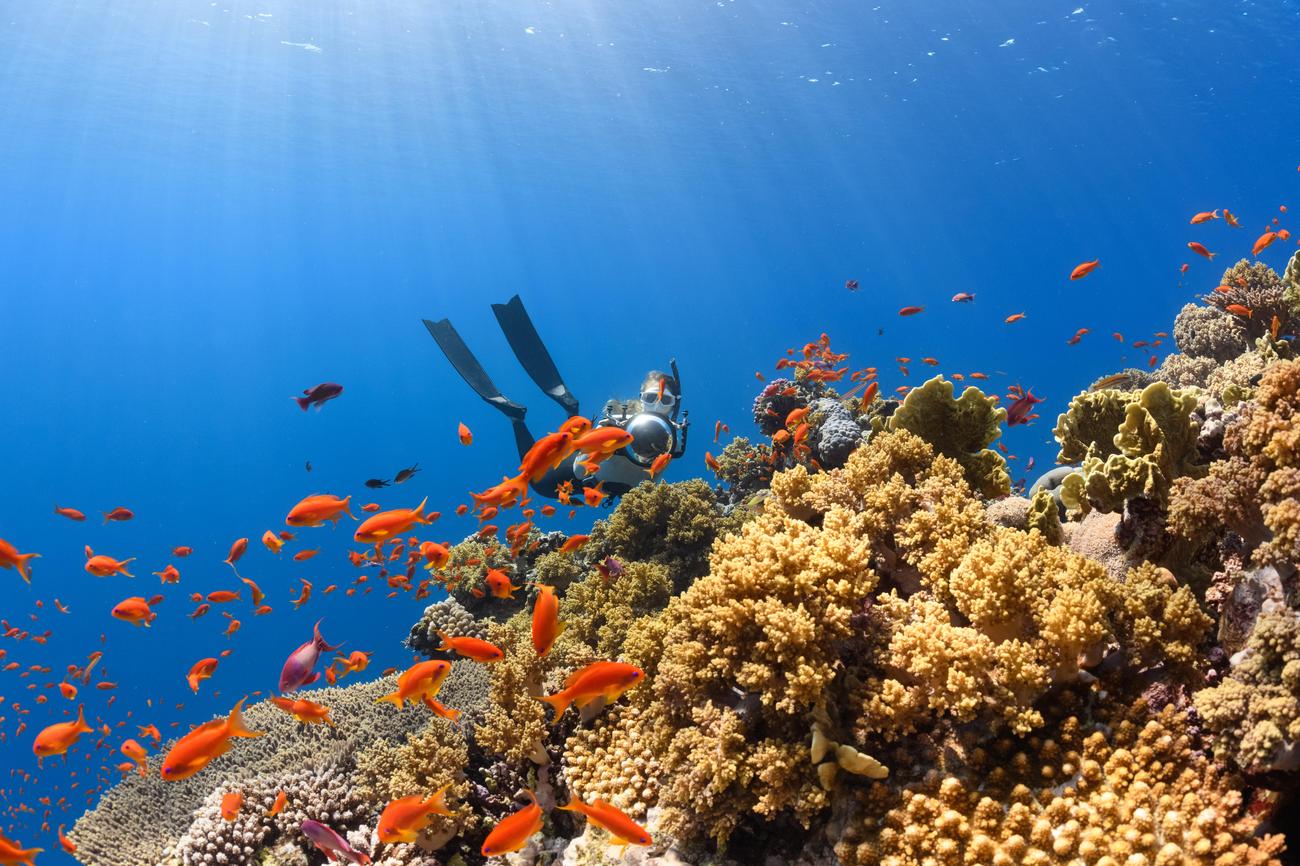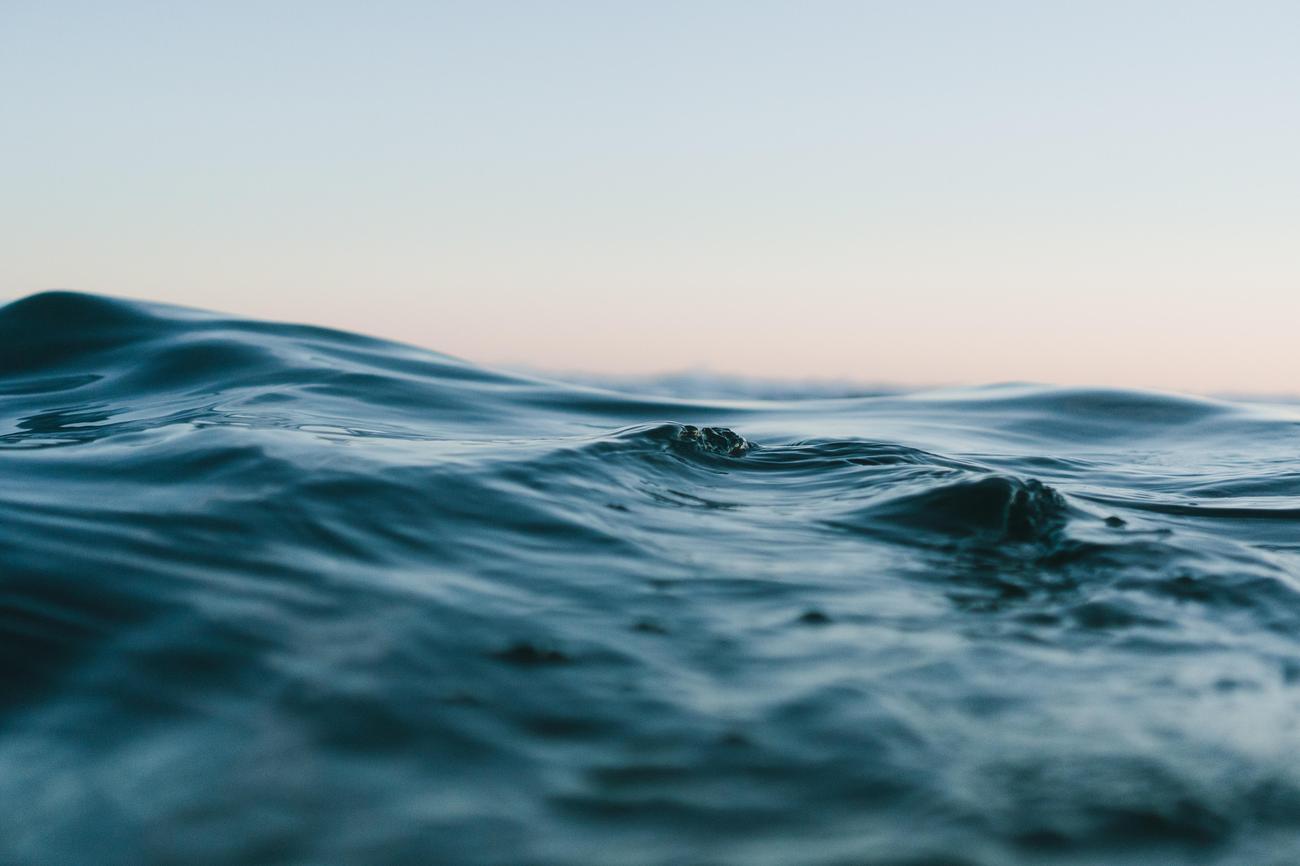Are you ready to plunge into an enchanting world beneath the waves? Explore the World: Scuba Diving and Snorkeling Adventures invites you on an extraordinary journey into the realm of aquatic wonders. Whether you are a seasoned scuba diver or a curious snorkeler, this article will introduce you to the thrill and beauty of these exhilarating underwater activities. Delve into the mesmerizing depths of the ocean, where vibrant corals dance in harmony, and elusive marine creatures weave through the crystal-clear waters. So grab your fins, strap on your mask, and get ready to embark on an unforgettable adventure as we dive headfirst into the captivating world of scuba diving and snorkeling.

[Which of the Following Indicates Scuba Diving or Snorkeling Activity]
If you’re an adventurer at heart and have an affinity for exploring the mysteries of the underwater world, you may find yourself drawn to the exhilarating activities of scuba diving and snorkeling. These thrilling aquatic endeavors allow you to immerse yourself in a vibrant ecosystem teeming with diverse marine life. But how can you identify whether someone is engaged in scuba diving or snorkeling? Let’s dive in and discover the telltale signs.
One of the most recognizable symbols associated with scuba diving or snorkeling is the red flag with a diagonal white stripe. This universally recognized flag has become an emblem of these aquatic activities, serving as a clear indication that divers or snorkelers are present. The bold contrast of colors catches the eye and acts as a visual cue to caution other water users of the submerged explorers. Whenever you spot this distinctive flag fluttering in the breeze, you can rest assured that exciting underwater adventures are taking place nearby.
Another unmistakable sign that indicates scuba diving or snorkeling is the presence of divers wearing wet suits. These skin-tight, insulating suits play a crucial role in maintaining a comfortable body temperature while submerged in cool waters. By conserving body heat and protecting against the chilling effects of the aquatic environment, wet suits are essential equipment for divers and snorkelers alike. So, if you come across individuals donning these sleek and snug outfits, you can be confident that they are preparing to embark on an unforgettable underwater journey.
Diver down flags are another commonly used indicator of scuba diving activity. These flags, typically red with a white diagonal stripe from top left to bottom right, act as a signal to alert boat operators and other water users of the presence of divers below. When you encounter these flags adorning vessels or buoys, it’s a clear indication that divers are actively exploring the depths. Their purpose is to avoid accidental collisions and ensure the safety of both divers and those enjoying above-water activities. Remember, these flags are not mere decorations; they symbolize the thrilling underwater adventures happening just beneath the surface.
In addition to the visual cues mentioned earlier, the alpha flag is another key indicator of scuba diving or snorkeling activity. This flag, featuring a blue and white design with a horizontal stripe in the middle, signifies that divers are present in the water. The alpha flag acts as an alert to other water users and can often be spotted floating atop a buoy or displayed on a dive boat. When you encounter this distinctive flag, you can be certain that an underwater explorer is venturing below, ready to unravel the beauty and wonders hiding beneath the waves.
Finally, let’s briefly touch upon the acronym SCUBA, which stands for Self Contained Underwater Breathing Apparatus. This term describes the equipment used by scuba divers to breathe underwater autonomously. With a SCUBA setup, divers carry their own air supply in a cylinder strapped to their backs, enabling them to explore the depths for an extended period. So, if you spot individuals equipped with this remarkable breathing apparatus, you can be confident that they are prepared to delve into the mesmerizing underwater realm.
In conclusion, spotting scuba divers and snorkelers can be an exciting experience. Look out for the distinctive red flag with a white diagonal stripe, divers wearing wet suits, diver down flags, and the alpha flag, all of which signify scuba diving or snorkeling activity. Keep an eye out for these visual cues, and you may just catch a glimpse of the intrepid adventurers exploring the mystical underwater wonders. So, what are you waiting for? Strap on your snorkel or scuba gear and join the ranks of fellow underwater explorers—unforgettable adventures await you beneath the surface!
Scuba diving opens up a fascinating underwater world filled with awe-inspiring marine life and stunning coral reefs. But did you know that there are some fun facts about scuba diving that will leave you even more excited to take the plunge? From the incredible bond that dolphins have with scuba divers to the fact that scuba divers can actually talk to each other underwater using special hand signals, there’s so much to discover in the world of scuba diving. So why wait? Dive right into these fun facts about scuba diving by clicking here: fun facts about scuba diving. Get ready to be amazed and inspired by the wonders that await beneath the surface!
Dive Computers: Understanding Conservatism and Gradient Factors
[youtube v=”fklZdcOdehM”]
In this article, we will explore the concepts of conservatism and gradient factors in dive computers. As a seasoned tech diver instructor and underwater explorer, Jill Heinerth emphasizes the importance of these factors in planning safe and successful dives. Dive computers play a crucial role in helping divers push the bounds of human endurance and explore uncharted territory underwater.
Conservatism Levels: Adjusting Personal Risk Factors
Dive computers offer the diver the opportunity to adjust personal risk factors by selecting different levels of conservatism. These personal risk factors can include age, injuries, illnesses, diving practices, thermal considerations, activity level, sea state, and buoyancy control. By understanding and adjusting conservatism settings, divers can enhance their safety underwater.
Recreational divers have the option to select a more conservative level, which allows them to leave the water sooner due to reduced no decompression limits. On the other hand, technical divers who choose a more conservative setting can stay in the water longer during decompression. These settings are often represented with plus one or plus two for more conservative and minus one or minus two for less conservative. It’s important to consult your computer’s manual to learn how to adjust conservatism factors according to your preferences.
Jill Heinerth highlights the significance of understanding and adjusting conservatism settings, as personal factors should not be overlooked. She simplifies the description of different strategies to make it accessible to divers without a physics degree.
“Personal factors should not be overlooked, and yet few divers know how to adjust those factors in a way that positively impacts their safety.”
Gradient Factors: Modifying Mathematical Models
Gradient factors are another important aspect to consider when using dive computers. One common mathematical model used in dive computers is the Bullman model, which can be modified using gradient factors. However, it’s important to note that not all Bullman algorithms are identical, as manufacturers may modify the math or use different tissue compartments.
In simple terms, gradient factors alter the math in a way that changes the diver’s decompression profile. There are two numbers used to describe a gradient factor, separated by a forward slash. For example, 30/70 or 20/80 are examples of gradient factors. The first number, known as the gradient factor low, determines the depth of the first stop or the deepest stop. The second number, known as the gradient factor high, offers the overall conservatism.
“The first number indicates how close to super saturation you want to be for the controlling tissue compartment before you generate a decompression stop. The second number offers the overall conservatism.”
Jill Heinerth highlights the importance of understanding these numbers as percentages and how they impact the divers’ decompression profile. Lower numbers generate deeper stops, while higher numbers provide additional conservatism. It’s important to find the right balance that ensures safety without unnecessary risks.
Conflicting Information and Research
There is conflicting information when it comes to deep stops and their efficiency in preventing decompression illness. Social media and anecdotal reports have led to much misinformation within the diving community. Recent research indicates that arbitrary deep stops may even increase neurological hits.
Professor David Doolet, in his article “Gradient Factors in a Post-Deep Stop World,” argues that deep stops are not necessarily more efficient and suggests that safer profiles can be achieved through other means.
“Since about 2005, evidence has been accumulating from comparative decompression trials that show deep stops are not more efficient and possibly less efficient than shallow stops.”
He recommends using gradient factors of 70/85 for his own dives, but acknowledges that there is still much to study and learn in this area.
Adaptable Algorithms: Real-Time Feedback
Algorithms such as Cento’s fused RGBM offer real-time feedback and can adapt to a diver’s specific diving behaviors. These algorithms take into consideration factors such as multi-day diving, reverse profiles, rapid ascent, and individual risk factors. Based on these practices, the algorithm generates reduced no-stop times, longer decompression stops, or additional safety stops.
This adaptive algorithm ensures divers are provided with tailored decompression schedules that align with their specific diving circumstances. For recreational divers engaging in simpler dives, the algorithm remains invisible and does not require any modification. However, as divers transition into riskier, deeper, longer, or more frequent dives, the algorithm shifts to a more technical mode.
“Stepped decompression stops made sense when we were using diving tables, but modern algorithms such as Cento fused better represent the slow gradual release of pressure from a continuous ascent.”
Centos unique feature displays the decompression ceiling and the “deco window” to guide the diver during the ascent. Upward arrows indicate on-gassing, while downward arrows prompt the divers to descend back to the sealing zone if the ceiling depth is violated.
Personal Responsibility and Individual Risk Assessment
Jill Heinerth emphasizes the importance of personal responsibility and individual risk assessment in diving. While it may be tempting to try to match diving profiles with others or select algorithms based on someone else’s computer, it is essential to prioritize personal safety and risk factors.
“Regardless of the strategy or algorithm you choose for calculating your decompression, please remind yourself that it should be a reflection of personal risk assessment.”
Each diver’s profile, gases, behaviors, and risk factors are unique, making it impossible to align completely with another diver. Therefore, it is crucial to make choices that protect you from decompression illness in the short term and potential long-term damage.
Conclusion
Understanding conservatism and gradient factors is vital for divers to plan safe and successful dives. Dive computers offer the opportunity to adjust personal risk factors and tailor decompression profiles based on individual preferences. It’s important to consult your computer’s manual, study the different strategies, and ensure that your diving practices align with your personal risk assessment.
Remember, personal responsibility and informed decision-making are key to ensuring a lifetime of safe and enjoyable diving experiences.
FAQ
Question 1: What are the indicators of scuba diving or snorkeling activity?
Answer 1: The indicators of scuba diving or snorkeling activity include the presence of a red flag with a diagonal white stripe and blue and white alpha flags. Additionally, the use of wet suits is commonly associated with participation in underwater activities. Diver down flags are also frequently used in scuba diving to indicate activity, while the alpha flag signifies the presence of a diver in the water.
Question 2: How can scuba divers and snorkelers identify each other?
Answer 2: Scuba divers and snorkelers can identify each other by looking for specific indicators. These include the use of wet suits, snorkels, masks, and fins. The presence of scuba tanks and diving regulators is an additional sign that someone is a scuba diver. Snorkelers, on the other hand, often use a snorkel tube and a mask to explore the underwater world.
Question 3: What does the term SCUBA stand for?
Answer 3: SCUBA stands for Self Contained Underwater Breathing Apparatus. It refers to the equipment used by scuba divers, which allows them to breathe underwater for extended periods. The SCUBA system typically consists of a diving cylinder or tank, a regulator, and a buoyancy control device (BCD), among other components.
Question 4: Why do scuba divers and snorkelers use flags?
Answer 4: Scuba divers and snorkelers use flags as a means of communication and to indicate their activity underwater. The red flag with a diagonal white stripe and blue and white alpha flags are specifically designed to represent scuba diving or snorkeling activity. By displaying these flags, divers and snorkelers can alert others to their presence and ensure their safety in the water.
Question 5: What are the safety measures associated with scuba diving and snorkeling?
Answer 5: Safety is of utmost importance in scuba diving and snorkeling. Some essential safety measures include proper training and certification, regular equipment maintenance and checks, adherence to dive plans and limits, and buddy diving. It is crucial to have a thorough understanding of diving techniques, including ascent and descent procedures, equalization methods, and emergency protocols. Additionally, being aware of one’s capabilities, monitoring air supply, and practicing good buoyancy control are key aspects of safe diving and snorkeling experiences.
Discover the Wonders of Scuba Diving and Snorkeling
Discover the Wonders of Scuba Diving and Snorkeling and immerse yourself in the enchanting world beneath the waves. Few experiences can rival the thrill of exploring the vibrant marine life that exists in our oceans, and both scuba diving and snorkeling provide you with the perfect opportunity to uncover the hidden treasures that lie beneath the surface. Whether you prefer the freedom of gliding through the water with a scuba tank or the simplicity of floating near the surface with just a mask and snorkel, these activities offer a gateway into a mesmerizing realm teeming with brilliant colors, diverse species, and awe-inspiring beauty.
Which of the Following Indicates Scuba Diving or Snorkeling Activity
When it comes to exploring the mesmerizing underwater world, scuba diving and snorkeling are two of the most popular activities that allow us to immerse ourselves in the beauty and biodiversity of the oceans. But how can we identify areas where these thrilling adventures take place? Well, there are specific signals that indicate scuba diving or snorkeling activity, ensuring the safety of divers and alerting other water users to their presence. One such signal is a red flag with a diagonal white stripe and blue and white alpha flags. These flags serve as a universal symbol to signify that scuba diving or snorkeling activities are happening in the area. Let’s dive deeper into what these flags represent and how they help to create a safe and enjoyable environment for underwater exploration.
The blue and white alpha flag is also commonly known as the diver down or scuba flag. It is a crucial element for indicating the presence of divers in the water. Typically displayed from a buoy or vessel, this flag is easily recognizable, even from a distance. Its blue and white design stands out against the backdrop of the water, grabbing the attention of both boaters and recreational water users. The presence of the alpha flag serves as a clear warning to others that divers are below and caution should be exercised to avoid potential accidents or disturbances. With this flag in place, divers can explore their chosen dive site with peace of mind, knowing that their underwater adventure is being acknowledged and respected by those on the surface.
Moreover, the dive flag is an internationally recognized symbol, accepted and understood by divers across the globe. It symbolizes the commitment of the diving community to ensure safety and awareness underwater. Just like traffic lights and road signs guide us on land, the dive flag acts as a navigational aid for water users, helping them steer clear of diving areas and avoid any potential danger. The use of this flag has become standardized and ingrained in diving protocols, making it an essential tool for maintaining order and safety in the underwater world.
To further enhance safety, it is important for divers and snorkelers to familiarize themselves with the guidelines associated with these flags. As recreational divers, we must learn to respect and follow the signals provided to us. Understanding the meaning and significance of the flags ensures that we contribute to a shared responsibility for safety and the protection of all marine life. By adhering to these standards, we forge a stronger community of divers who are united in preserving the beauty and fragility of our underwater ecosystems.
In conclusion, the red flag with a diagonal white stripe and blue and white alpha flags function as essential indicators of scuba diving or snorkeling activity. By following these signals, both divers and other water users can navigate the oceans with caution and respect for one another. Let us embrace these symbols as a reminder that beneath the surface lies a world of wonders, waiting to be explored and protected. So, the next time you spot these flags, remember to approach with care, for they signal the presence of passionate individuals who are dedicated to preserving the treasures of our oceans.
“The blue and white alpha flag and red flag with a diagonal white stripe signify not only the presence of scuba diving or snorkeling activity but also our commitment to safety and the protection of our precious marine ecosystems.”
Scuba diving is an activity that offers a thrilling and immersive experience like no other. You may think you know everything there is to know about scuba diving, but prepare to be amazed by these fun facts! Did you know that scuba diving is actually an acronym? It stands for “Self-Contained Underwater Breathing Apparatus.” Explore the depths of the ocean with ease and discover the incredible marine life that resides there. Dive into a world filled with vibrant colors, captivating creatures, and hidden underwater wonders. Experience the weightlessness and freedom that comes with being submerged in water. So, if you’re ready to dive into a world of fun and excitement, click here to uncover some fascinating fun facts about scuba diving!
Snorkeling and Breath-Hold Diving Fatalities: Understanding the Differences
[youtube v=”eTRwy8S4mhM”]
Introduction:
This article aims to shed light on the topic of snorkeling and breath-hold diving fatalities. By examining the data and exploring the causes of these fatalities, we hope to gain a better understanding of the differences between these two activities and their associated risks. This knowledge can then be used to improve safety measures and prevent future tragedies. In the following sections, we will discuss the fatality rates, demographics, types of activities, and causes of death related to snorkeling and breath-hold diving.
Fatality Rates:
To gauge the significance of the problem, it is crucial to consider the fatality rates associated with snorkeling and breath-hold diving. However, it is important to note that the available data is limited and may not capture all fatalities. Based on data from various sources, including public health records, it has been estimated that the fatality rate for breath-hold injuries is relatively low, at 0.06 per 1 million population. This number takes into account only the fatalities that have been identified and may not reflect the total number of fatalities that occur.
Comparatively, the fatality rate for snorkeling in Australia is slightly higher, at 5 deaths per 1 million snorkelers. It is worth mentioning that the number of snorkeling fatalities in Australia has been increasing over the years, possibly due to the popularity of snorkeling and the presence of a thriving industry in the region. Additionally, the age of snorkeling participants has been on the rise, indicating that older individuals are increasingly engaging in this activity.
When compared to other recreational activities, such as triathlons, the fatality rate for breath-hold diving remains relatively low. In a study conducted on US triathlons, the incidence of sudden deaths, including those with cardiac arrest, was found to be 1.74 per 100,000 participants, equivalent to 17 cases per 1 million. The fatality rates were higher for men and individuals over the age of 60, suggesting a higher risk for these groups. It is worth noting that a significant number of these victims had clinically relevant cardiovascular abnormalities, indicating that pre-participation screening for cardiac health may be beneficial.
Demographics:
Examining the demographics of snorkeling and breath-hold diving fatalities can provide valuable insights into the trends and characteristics of these incidents. In terms of gender distribution, there is a higher percentage of female snorkelers among those who require hospital intervention compared to fatalities. This gender discrepancy may indicate that female divers are more likely to be involved in non-fatal incidents.
Similarly, the age distribution differs between snorkeling and breath-hold fatalities. In California, the majority of hospital cases involve younger individuals, while in other regions, there is a higher proportion of older victims. This may suggest that older individuals have a higher fatality rate in snorkeling incidents. It is important to note that the age and sex distribution in these cases are influenced by factors such as the type of activities and the proportion of participation among different demographics.
Causes of Death:
Understanding the causes of fatalities in snorkeling and breath-hold diving is crucial for developing preventive measures and improving safety practices. In both activities, common causes of death include sudden cardiac death, immersion pulmonary edema, mask and snorkel issues, shallow water blackout, and decompression sickness in free diving. These causes are often interrelated and can lead to tragic outcomes.
In snorkeling incidents, sudden cardiac death and immersion pulmonary edema are of particular concern. Snorkelers may experience cardiac events while diving under the surface or during prolonged immersion. Additionally, equipment-related issues such as faulty masks and snorkels can contribute to accidents and fatalities.
In breath-hold diving, the risk of shallow water blackout is a significant concern. This occurs when divers hold their breath for an extended period, leading to a decrease in oxygen levels and loss of consciousness. Additionally, repetitive deep dives increase the risk of hypoxic brain injury and decompression sickness. Free divers, in particular, may engage in high-risk maneuvers like lung packing and sinus flooding, which can lead to injuries.
Improving Safety:
To enhance safety in snorkeling and breath-hold diving, several measures can be implemented. Firstly, raising awareness about the risks associated with these activities is crucial. Education on proper techniques, recognizing signs of distress, and knowing when to cease diving can significantly reduce fatalities.
Furthermore, regular equipment inspections and maintenance are essential to prevent accidents related to faulty masks and snorkels. Implementing and enforcing regulations for pre-participation screening, especially for older individuals and first-time participants, can help identify underlying health conditions that may increase the risk of fatalities.
Conclusion:
Snorkeling and breath-hold diving fatalities present unique challenges that require attention and proactive measures. By understanding the differences in fatality rates, demographics, causes of death, and implementing necessary safety precautions, we can work towards making these activities safer for enthusiasts worldwide. It is crucial for authorities, industry professionals, and divers themselves to collaborate and prioritize safety to prevent tragic incidents and ensure the enjoyment of these activities for all.

FAQ
Q: What is the significance of the red flag with a diagonal white stripe and blue and white alpha flags in scuba diving or snorkeling activities?
A: The red flag with a diagonal white stripe and blue and white alpha flags is used to indicate scuba diving or snorkeling activity. This flag, also known as the diver down or scuba flag, is an internationally recognized symbol that alerts other water users that divers are present in the area. It is flown from either a buoy or vessel to identify an area where scuba diving or snorkeling activities are taking place.
Q: How are the red flag and blue and white alpha flags used in scuba diving or snorkeling activities?
A: The red flag with a diagonal white stripe and blue and white alpha flags are flown to indicate the presence of scuba diving or snorkeling activities. These flags serve as a visual warning to other water users, notifying them that there may be divers in the area. It is important for boaters and other individuals engaging in water activities to be aware of these flags and exercise caution to avoid endangering the divers.
Q: What is the blue and white alpha flag in scuba diving or snorkeling activities?
A: The blue and white alpha flag, also known as the diver down or scuba flag, is a symbol used to indicate scuba diving or snorkeling activities. This flag is flown along with the red flag with a diagonal white stripe to notify other water users that divers are present in the area. It is an international standard for indicating the presence of underwater activities and serves as a warning for boaters and others to be cautious and avoid disturbing the divers.
Q: Why is it important to use the red flag and blue and white alpha flags in scuba diving or snorkeling activities?
A: The use of the red flag with a diagonal white stripe and blue and white alpha flags in scuba diving or snorkeling activities is crucial for ensuring the safety of divers. These flags signal to other water users that there are divers present in the area, allowing them to exercise caution and avoid actions that may endanger the divers. By using these flags, divers can reduce the risk of accidents and promote a safe and enjoyable underwater experience.
Q: Where should the red flag with a diagonal white stripe and blue and white alpha flags be flown in scuba diving or snorkeling activities?
A: The red flag with a diagonal white stripe and blue and white alpha flags should be flown from a buoy or vessel in the area where scuba diving or snorkeling activities are taking place. By displaying these flags in a visible location, such as the top of a dive buoy or the mast of a boat, other water users can easily identify the designated area and be aware of the presence of divers. It is important to position the flags where they can be seen from a distance to provide effective warning to others.
- Guatemala vs. Costa Rica: Plan Your Trip Smartly - April 16, 2025
- Master Types of Pumps: Ultimate Guide to Selection - April 16, 2025
- Unlock Types of Makeup Secrets: Master Any Look Now - April 16, 2025
















